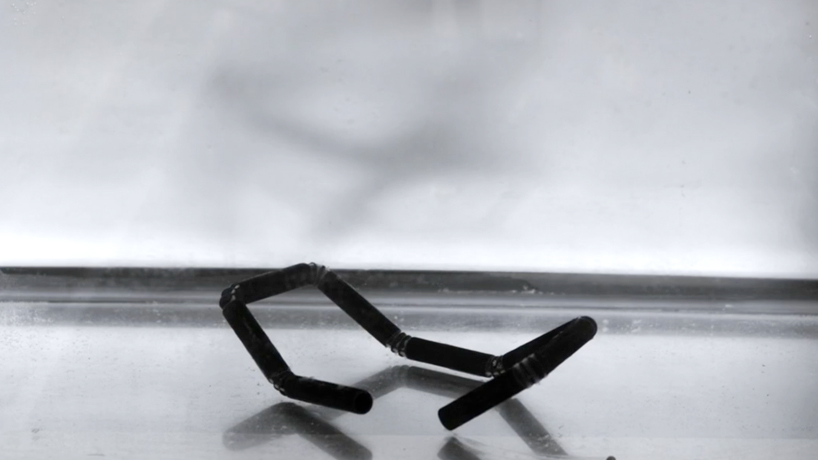پژوهشگرانی از دانشگاه ام آی تی به واسطهی پژوهشی بر روی ساختارهای خودمونتاژ به یک سری دستاورد جالب توجه رسیدند که اگرچه طراحی و اثر هنری نیستند اما یقینا بر روی آثار طراحی و هنر تاثیر چشمگیری خواهند گذاشت. بر روی سازه های معماری، مبلمان و عناصر فضاسازی، بر روی طراحی وسایل نقلیه، بر روی بستهبندیها ... خلاصه این طور دستاوردهای علمی تکنولوژی گاهی به طور مستقیم بر آثار دیزاین و حتی هنر تاثیر میگذارن.
حتما ویدیوهای موجود در پست رو مشاهده کنین

as the technologies in 3D printing progress over time, new scientific breakthroughs leading to the discoveries of organs printed from regenerative cells and bio-engineered body parts will become a thing of the past. seeing the potential in self-assembling forms, MIT researcher skylar tibbits and team from minneapolis-based stratasys have worked together to develop a method of 4D printing programmable entities that self-actuate on their own - much the way a strand of DNA zips itself together. the new rapid-protoyping technique entails multi-material prints with the added capability of embedding transformative information from one shape to another.
instead of printing out a complete object, the 4D method creates a long string of multiple materials - which then fold and convert into various shapes when placed in water, activating the morphing process. engineered with different properties at the particle level within the 3D geometry - software allows for simulated self-assemblies, optimizing design constraints and joint folding. it is the idea that this technology can be implemented not only into small-scale projects, but used in the future construction of architectural projects such as skyscrapers, buildings or even housing on the moon.
4D printing: cube self-folding strand
video courtesy skylar tibbits

4D printed cubes
4D printing: MIT self-folding strand
video courtesy skylar tibbits
self-folding sheets: hyperbolic paraboloid
video courtesy skylar tibbits
طرح انتخاب شده از : Designboom ]





















